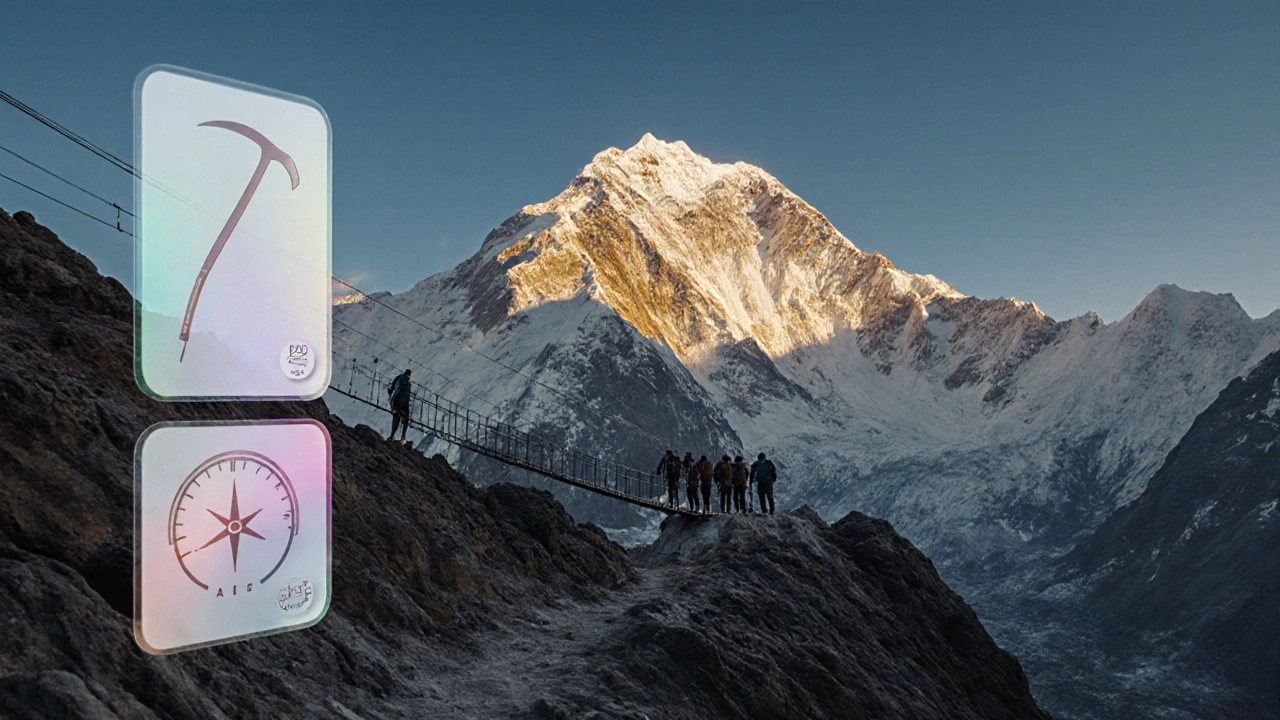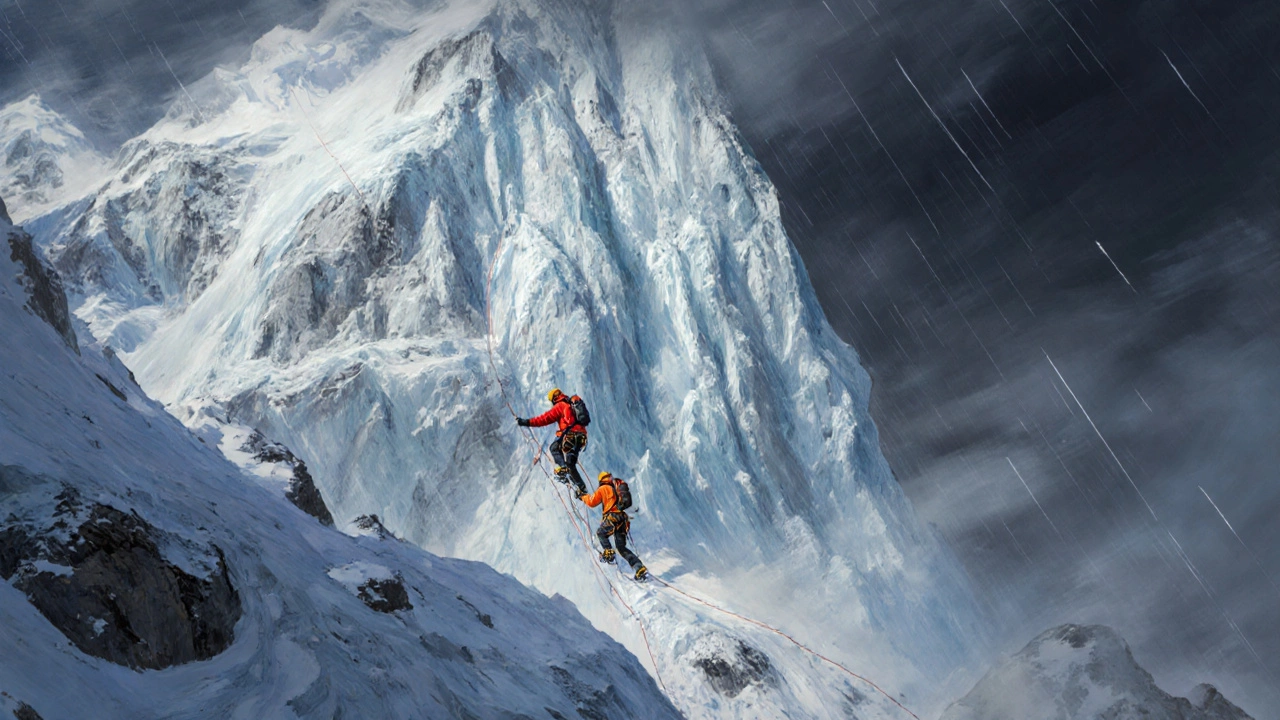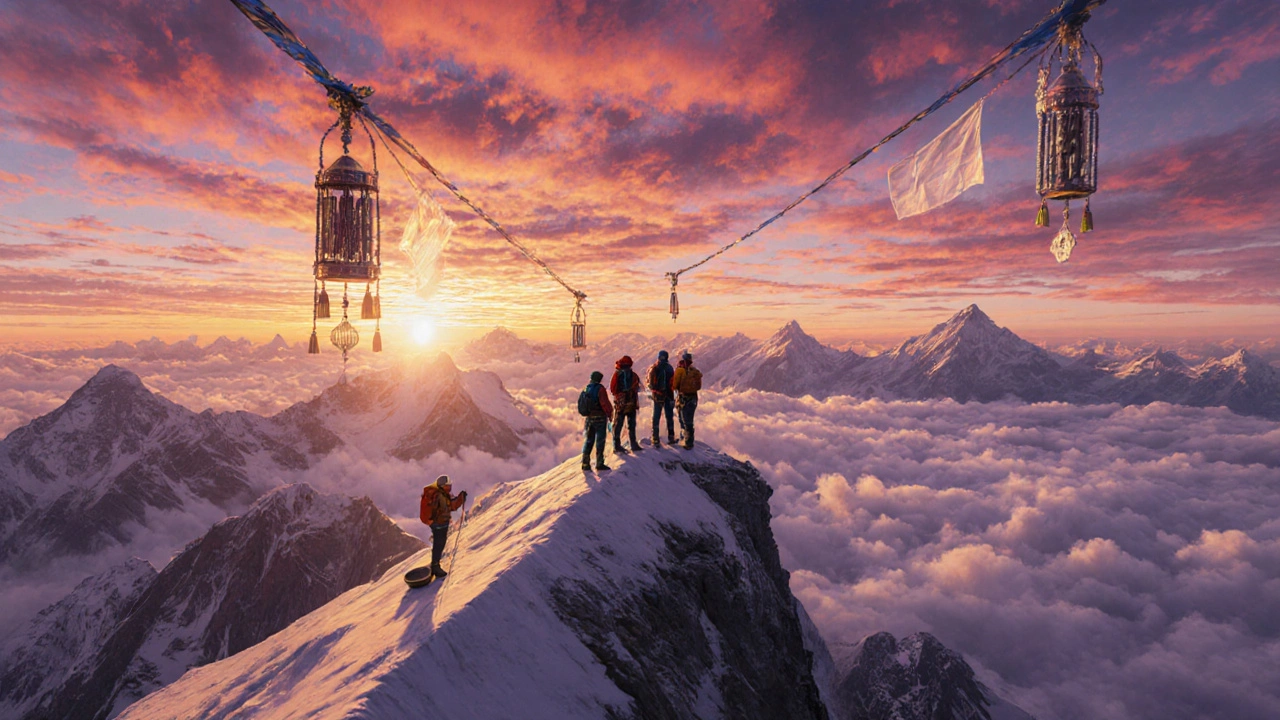SEARCH
The Hardest Peak to Climb in India - Why Kangchenjunga Tops the List


Kangchenjunga Difficulty Analyzer
Technical Grade
VIII (Steep ice & mixed)
Very High DifficultyAltitude Challenge
8,586 m (28,169 ft)
Extremely HighAccess Difficulty
12-day trek to Base Camp
Very High DifficultyHazards
Avalanches, crevasses, storms
Very High RiskDifficulty Comparison Table
| Peak | Elevation (m) | Technical Grade | Access Difficulty | Success Rate |
|---|---|---|---|---|
| Kangchenjunga | 8,586 | VIII (Mixed) | Very Hard | ≈ 7% |
| Nanda Devi | 7,816 | VII (Rock & Ice) | Hard | ≈ 12% |
| Kamet | 7,756 | VI (Ice) | Moderate | ≈ 20% |
| Saser Kangri | 7,544 | VI (Mixed) | Hard | ≈ 15% |
Why Kangchenjunga is Hardest
- Extreme Altitude: Requires supplemental oxygen for safety
- Technical Terrain: Steep ice walls and mixed rock-ice sections
- Remote Approach: 12-day trek through rugged terrain
- Unpredictable Weather: Monsoon remnants cause sudden snowfall
Ever wondered which mountain in India will test every ounce of your skill, stamina, and nerve? If you’ve been scrolling through countless summit lists, you probably noticed that the answer isn’t just about height. It’s about technical grind, weather tantrums, bureaucratic hoops, and sheer remoteness. In this deep dive we’ll reveal the mountain that checks every box for “hardest to climb” and break down what makes it a true monster for mountaineers.
How We Define “Hardest”
Before naming a winner, we need a clear yardstick. Climbing difficulty can be sliced into four core pillars:
- Technical grade - rock, ice, mixed climbing sections and the equipment needed.
- Altitude and physiological stress - the higher you go, the tougher the oxygen squeeze.
- Access and logistics - remote locations, limited approach routes, and permit scarcity.
- Objective hazards - avalanches, crevasses, sudden storms.
When a peak scores high on all four, it earns a reputation as the toughest climb in a region.
Kangchenjunga is the Hardest Peak to Scale in India
Standing at 8,586m (28,169ft), Kangchenjunga is the world’s third‑highest mountain and the crown jewel of the Eastern Himalayas. While the summit sits on the border of India and Nepal, the most common Indian route starts from the Sikkim side, making it the toughest Indian climb by every measure.
Why Kangchenjunga Beats the Rest
Here’s a quick look at the four pillars that push Kangchenjunga into the hard‑core zone:
- Extreme altitude - Even seasoned 8,000‑meter climbers feel the thin air; the summit push often requires supplemental oxygen for safety.
- Technical terrain - The standard ‘Southwest Face’ route includes steep ice walls (up to 70°), mixed rock‑ice sections, and a notorious ‘North Ridge’ that demands advanced ice‑climbing chops.
- Remote approach - The trek to base camp covers 120km of rugged jungle, high passes, and river‑crossings, often taking 12‑14 days just to set up camp.
- Unpredictable weather - The Eastern Himalaya catches monsoon remnants, causing sudden snowfall and high avalanche danger, especially on the lower slopes.
Combine those with a strict permit regime, and you’ve got a summit that only a handful of elite teams have touched since the first successful Indian ascent in 1973.
How Kangchenjunga Stacks Up Against Other Indian Giants
| Peak | Elevation (m) | Technical Grade* (Ice/Rock) |
Access Difficulty | Permit Stringency | Average Success Rate |
|---|---|---|---|---|---|
| Kangchenjunga | 8,586 | VIII (Steep ice & mixed) | Very Hard - 12‑day trek to Base Camp | Strict - Limited permits, Indian‑foreign team mix required | ≈ 7% |
| Nanda Devi | 7,816 | VII (Rock & ice) | Hard - Restricted wildlife zone | High - Special environmental clearances | ≈ 12% |
| Kamet | 7,756 | VI (Ice) | Moderate - Classic trekking route | Medium - Standard IMF permit | ≈ 20% |
| Saser Kangri | 7,544 | VI (Mixed) | Hard - Requires crossing Ladakh high passes | Medium - Military‑area clearance | ≈ 15% |
*Technical grades follow the UIAA scale where VI=steep ice, VII=mixed, and VIII=very technical mixed sections.

Permits, Paperwork, and the Role of the Indian Mountaineering Federation
Climbing Kangchenjunga isn’t just a physical battle; it’s a bureaucratic one too. The Indian Mountaineering Federation (IMF) issues the primary climbing permit, but you also need clearance from the Sikkim State Government. Here’s the usual flow:
- Submit a detailed expedition proposal to the IMF (includes team CVs, route plan, rescue strategy).
- Obtain a “Restricted Area Permit” from Sikkim’s tourism office - limited to a handful of teams per season.
- Pay the combined fee (≈₹2,00,000 for IMF + ₹1,00,000 for state).
- Secure a “Special Environmental Clearance” if you plan to camp in the Nanda Devi Biosphere adjacent zone (rarely needed for Kangchenjunga).
Approval can take 8‑12 weeks, so start early.
Gear Checklist & Acclimatization Strategy
Because altitude is unforgiving, you’ll need a gear list that covers everything from sub‑zero bivouac sacks to high‑tech ice tools. Below is a condensed checklist - think of it as a cheat sheet for a true Kangchenjunga ascent.
- Climbing boots - double‑layered, 10‑mm insulation, crampon compatible.
- Ice axes - 2×technical “U‑shaped” tools, plus a rescue axe.
- Crampons - 12‑point, alloy with front-pointing spikes.
- Down suit - 800fill power, modular layers for extreme wind chill.
- Supplemental oxygen system - 2‑stage regulator, 4L canisters (minimum 120L total).
- Navigation - GPS unit, topographic maps (SRTM 30m), altimeter.
- Medical kit - portable hyperbaric chamber, high‑altitude meds (acetazolamide, dexamethasone).
Acclimatization follows a “climb‑high, sleep‑low” pattern: spend 4‑5 days at 5,400m (Base Camp), then push to a 6,200m Advanced Camp, descend for rest, repeat. The goal is to keep your resting heart rate below 80bpm at each altitude step.
Historical Highlights - Triumphs and Tragedies
Since the first Indian expedition in 1973, only a dozen teams have stood on Kangchenjunga’s summit. Notable achievements include:
- 1973 - First successful Indian ascent led by Col. Ranvir Singh (no supplementary oxygen).
- 1999 - First all‑female team from the UK reached the top via the ‘North Ridge’.
- 2008 - A Japanese‑Indian joint expedition set a new speed record: 10days from Base Camp to summit.
Tragedies are sobering reminders of the mountain’s power. Avalanches swept away camps in 2010 and 2015, taking at least six lives. The high fatality ratio is why the success rate stays under 10%.
Training Peaks Before Kangchenjunga
If Kangchenjunga feels like a haunted monster, tackle a few stepping‑stone climbs first. Good training options:
- Stok Kangri (6,153m) - Classic Sikkim trek with technical ice sections.
- Goecha La (4,940m) - Offers glacier travel and exposure to similar weather patterns.
- Gangotri I (6,600m) - A Himalayan peak in Uttarakhand that sharpens high‑altitude endurance.
Graduating from these peaks lets you fine‑tune gear, test acclimatization schedules, and build confidence before attempting the ultimate test.
Safety Checklist & Pro Tips
Before you strap on your boots, run through this final safety round‑up:
- Confirm all permits are valid for the exact dates you plan to be on the mountain.
- Carry a satellite communicator (e.g., IridiumGo) - every day on the summit push should be check‑in‑ed.
- Set up a robust rescue plan with a local helicopter service; remember that high winds can ground flights.
- Practice crevasse rescue drills at a lower glacier before you leave base camp.
- Never underestimate nutrition - aim for 4,500kcal/day at altitude to keep energy reserves high.
- Respect the local culture; the Sikkimese view Kangchenjunga as a sacred deity.
Following these steps won’t guarantee a summit, but they’ll dramatically boost your odds of coming back alive.

Frequently Asked Questions
What is the best time of year to attempt Kangchenjunga?
The window between late May and early July offers the most stable weather, with lower avalanche risk and longer daylight hours.
Do I need a climbing partner from India?
Yes. IMF regulations require at least one Indian citizen on any foreign‑led expedition for Kangchenjunga.
How long does a typical Kangchenjunga expedition last?
From arrival in Gangtok to return, most teams spend 45‑55 days, including acclimatization, approach trek, and a 10‑day summit push.
Is supplemental oxygen mandatory?
Technically no, but the IMF strongly recommends it for safety, especially for teams without prior 8,000‑meter experience.
What are the major hazards on the South‑West Face route?
Steep icefalls, hidden crevasses, frequent high‑wind avalanches, and sudden white‑out conditions above 7,000m.